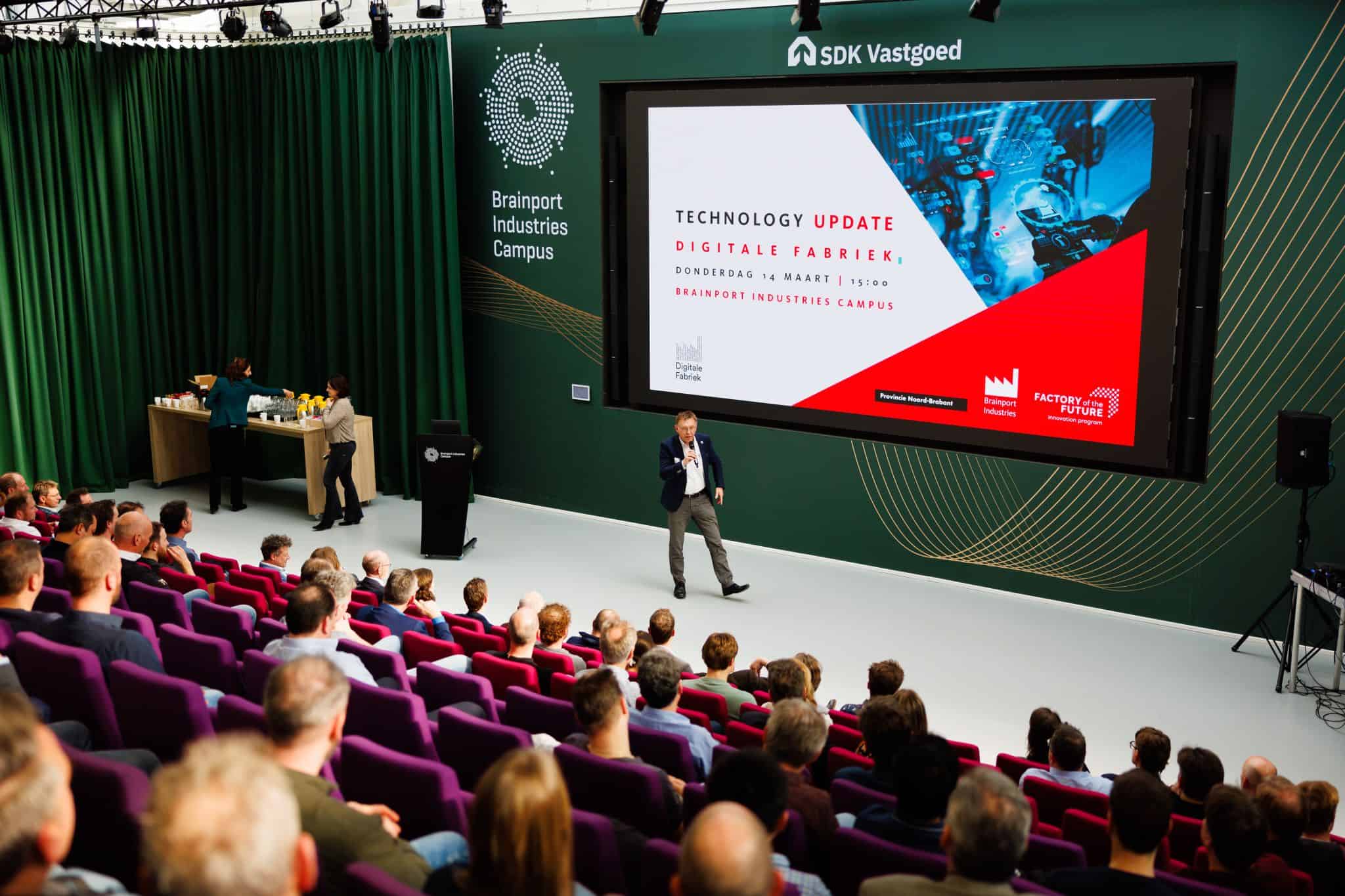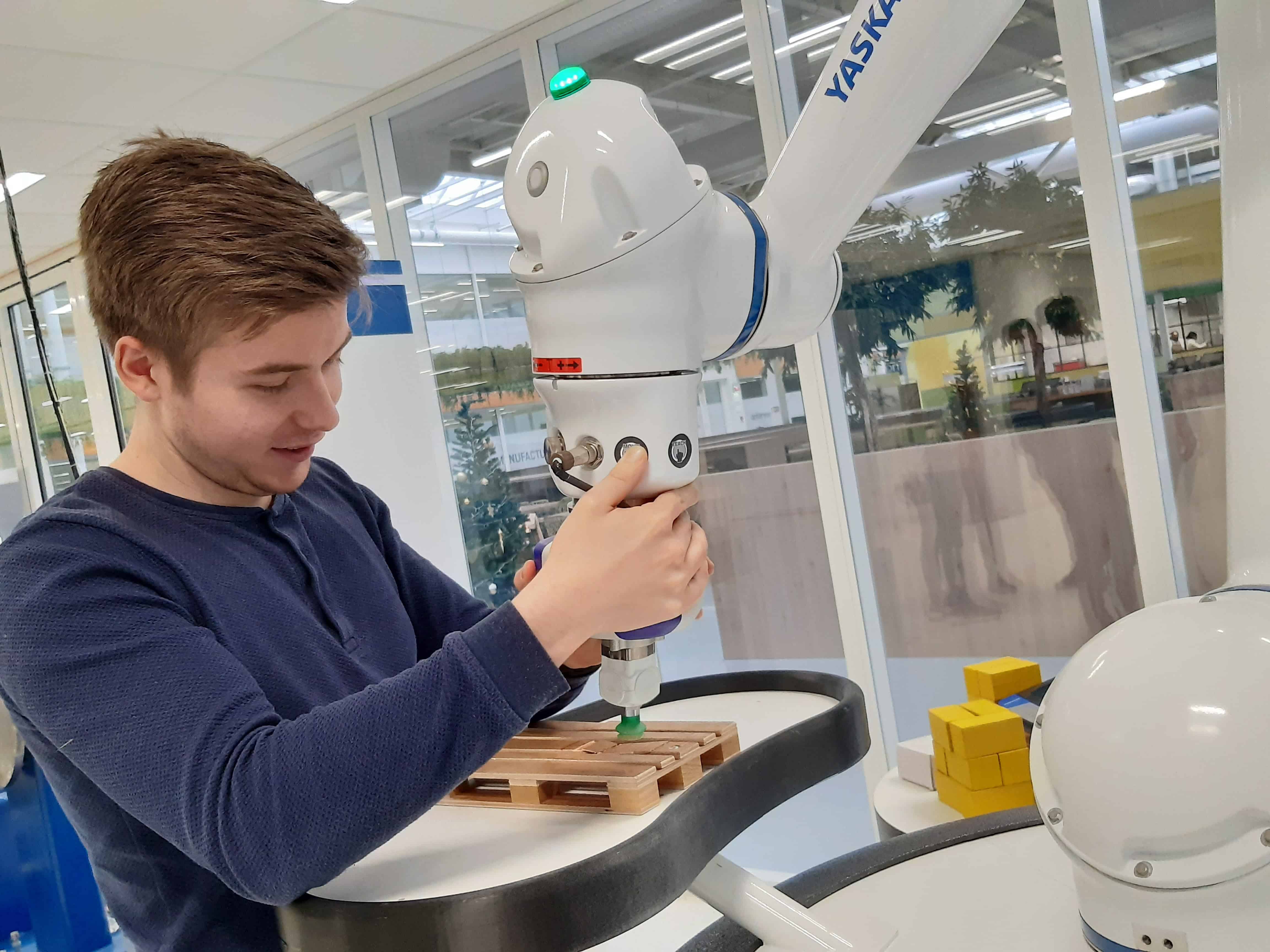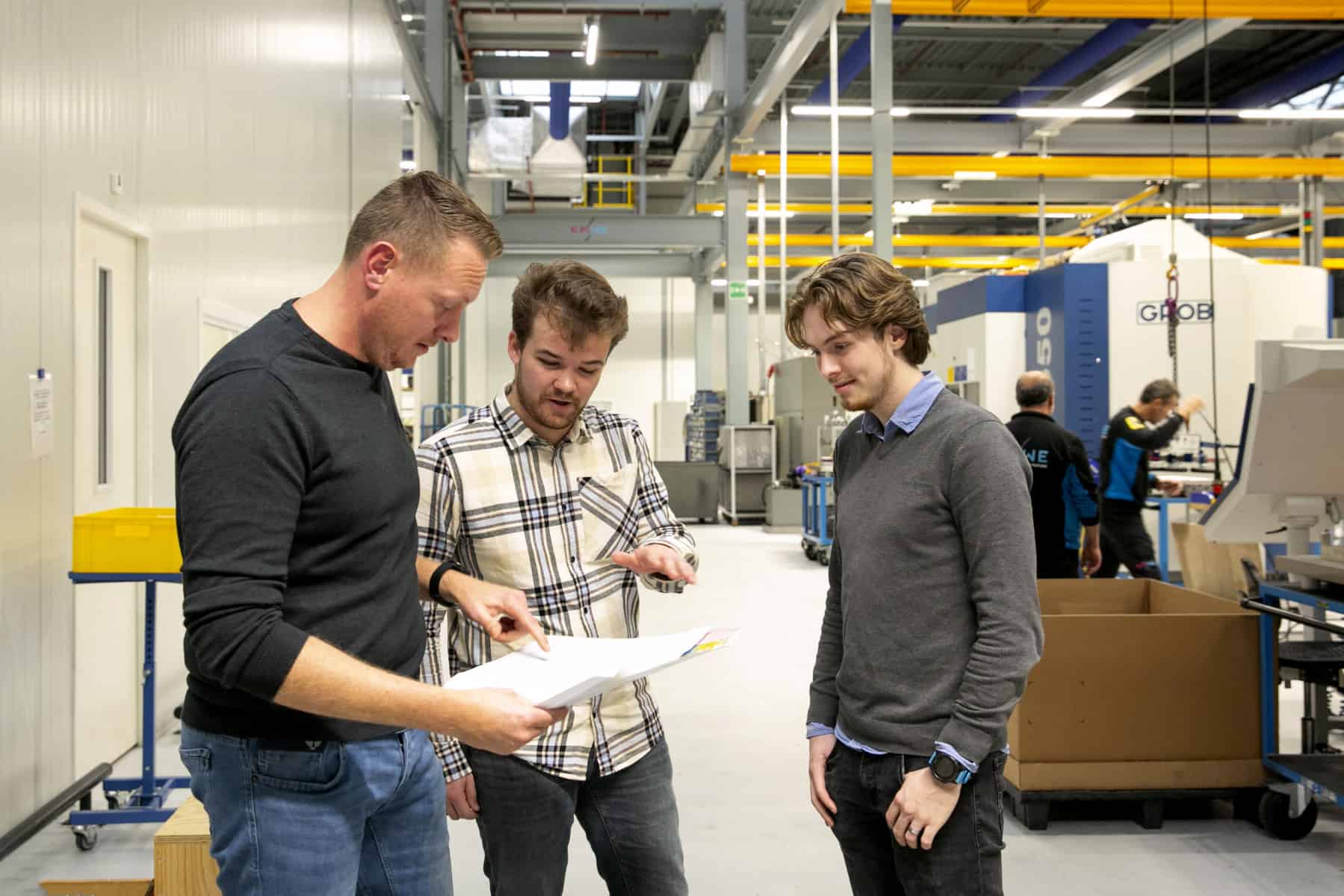
(by Sanne Resoort, Fontys)
The project The Digital Factory of the Future started four years ago on the initiative of Brainport Industries in cooperation with TU/e, TNO, and Fontys University of Applied Sciences. Teade Punter, lecturer in High Embedded Software at Fontys, explains the project: “The fourteen participating companies come from the ecosystem of Brabant’s Smart Industry. The goal is to jointly look at how companies can use data better. From Fontys, we deploy students to take on assignments for companies. That way we bring students into contact with technologies that we do not have in education.”
Why this is important
At Brainport Industries Campus, a lot of work is being done on the connection between education and the professional field. The Digital Factory project is an excellent example of this.
According to Punter and research leader Bart van Gennip, the strength of the collaboration lies in the linking of theory to practice. “The technology being developed at TU/e and TNO is quite far removed from the shop floor. We are working with a consortium of SMEs that are suppliers to large companies in this region. They have to keep up in IT and Data, but if you ask them about their Asset Administration Shell, for example, they look at you glassily,” says Van Gennip. “The strength of the HBO, of Fontys, is that we make the newly developed technology practical for the companies. We show what such technology actually does for their company. And because of that, they get excited.” The focus is on the key technologies, digital connectivity technologies, and digital twinning.
Digital simulation
The company KMWE, based at the Brainport Industries Campus in Eindhoven, is one of the fourteen participants. They came up with the task of building a simulation of a Multi-Agent Planning System (MAS) that they want to deploy on the shop floor. A MAS links different software systems together and ensures that they exchange data. The goal is to deploy technology in a traditional production environment better in order to produce faster and more efficiently. Punter: “To try that as an experiment directly on the shop floor has too much impact on the business organization. You can prove that such a MAS works by simulating it digitally and making it a digital twin. You don’t have to rebuild the factory immediately. You show through such a simulation what is possible, then the company joins in, and the next step is that others join in.” The lector believes that the advantage of this project approach is that you tackle the problem at several companies at the same time.
Linking up with new developments
Paul Driessen, on behalf of KMWE, explains the added value of participating in the project: “The knowledge developed at the knowledge institutes can be tested for applicability on the shop floor. It’s a great way for a company to catch up with the latest developments.” Another additional advantage, according to Driessen, is the different perspectives you gain: “During the consortium meetings, we discuss various topics and then things come up that I had not yet thought of. In addition, students open your eyes and show you where you stand as a company in the market. Sometimes it is a confirmation that you are doing well, and sometimes you are shown the mirror that you can still improve your organization.”
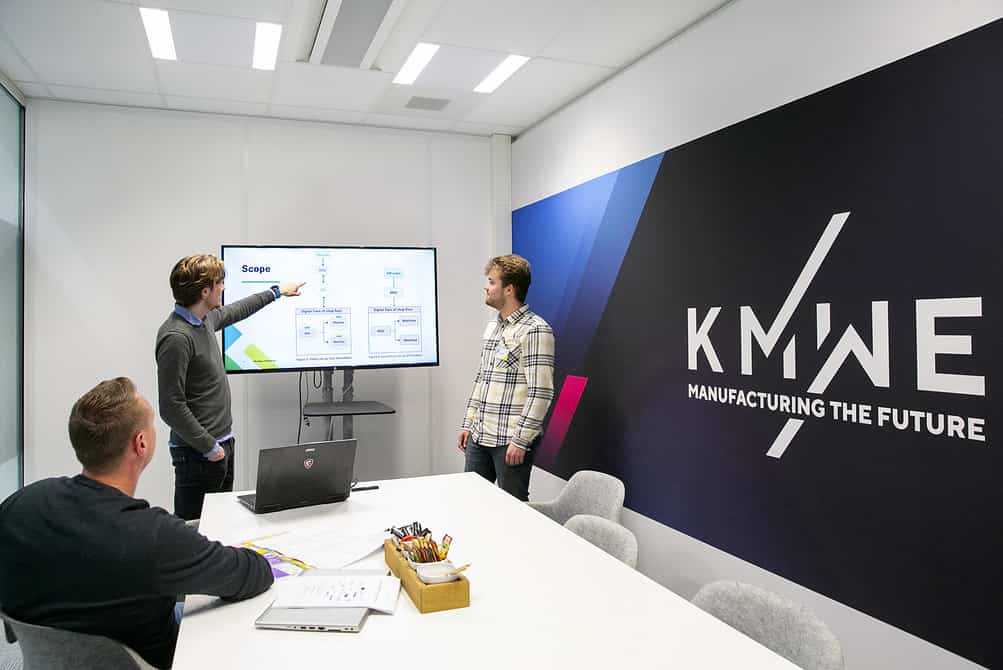
Collaboration is strength
Two students are closely involved in KMWE’s assignment: Pim Veroude, a fourth-year ICT student at Fontys, and Fabian Claassen, a master’s student in Mechanical Engineering at TU/e. The fact that large companies from the region are participating in the project was why they chose this graduation project. “At the same time, this is also exciting because they do look to me to bring the project to a successful conclusion,” says Veroude. The fact that this requires both theory and practice is something Claassen finds of added value: “Our project is all about validating theory. For that, you need the various parties such as TNO, TU/e, and InControl, the supplier of the simulation software. I am responsible for the MAS, but how it is correctly represented in a Digital Twin is Pim’s specialty.”
Interaction
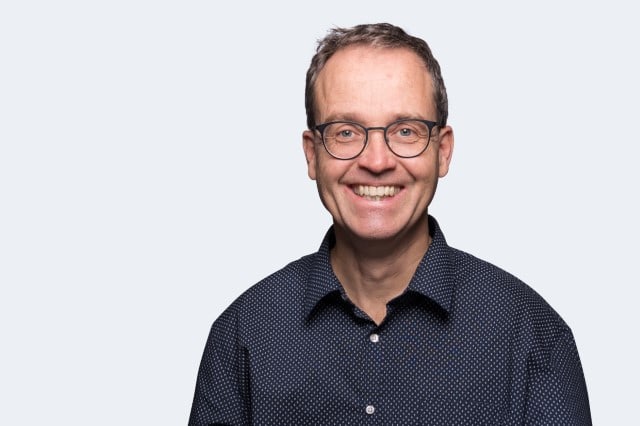
Research leader Van Gennip, who is supervising student Pim Veroude on his assignment, sees that both graduates can convince the companies of the project’s added value. “The students recently showed in a presentation that you can build a simulation of a shopfloor in a short time and in a relatively simple way. By showing the possibilities of this technology in concrete terms, it comes alive for the participating companies, and they come up with questions. You can see that interaction between the two parties occurs. And that the whole consortium benefits from this.” He emphasizes that the basis for such a good presentation of such a digital twin also lies in the cooperation with the right supplier. “InControl cooperates well and has software suitable for this.”
Infect

For education, the added value is in the project that students get to know a business organization from the inside. Fontys research group High Embedded Software can thus show where its strengths lie. “We have to start from the knowledge in which we specialize and combine that with the technologies that are or become important,” Van Gennip says. “We want to infect students with the right knowledge and teach them how to use new technologies.” He is proud that steps have been made from science to application within the current project. For the future, he wants to move toward “innovations that can be prepared from technology in such a way that companies can get it working through a button in the system.” To take that step, cooperation is needed not only between the university and college but also with the MBO, according to Van Gennip: “The innovations have to be implemented at companies, and that is where their strength lies.”
Vision and manpower
The Digital Factory of the Future project will soon be completed. The follow-up project is included in the national growth fund NXTGEN HighTech (Smart Industry Capacity Booster). TU/e is also affiliated with this. “The goal of these follow-up projects is to draw companies along. Whether they want to participate and whether it will work depends on the vision and manpower they have available. For the college, however, it is important to have the right match with a company. That is only possible if you show them as concretely as possible how they can apply it within their organization,” explains lecturer Punter.



